by Scott Howard | Jun 30, 2016 | Marketing and Advertising Insights, ScLoHo's Media, ScLoHo's Web World, The Not-So-Secret Writings of ScLoHo
Our previous article talked about making sure you put together a marketing strategy plan by asking and answering the right questions in the right order. But hand-in-hand with that, I also need you to consider, What Happens When I Google You?
I do this all the time. Before I meet with someone, I ask Google to find out whatever it can about that person or business. 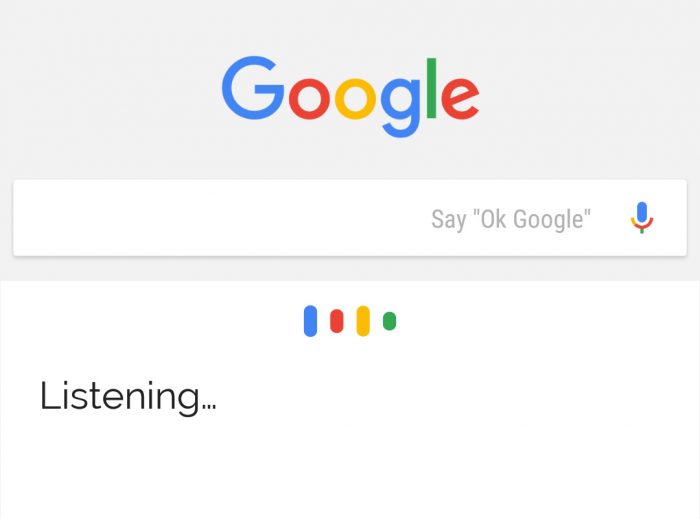
I’m not the only one who does this. With the advances in our mobile tech to be able to search simply by talking, this is quickly becoming the norm. So it doesn’t matter if you Google others, others are Googling you.
Back to the question, What Happens When I Google You?
The worst that could happen is a bunch of negative results on page one.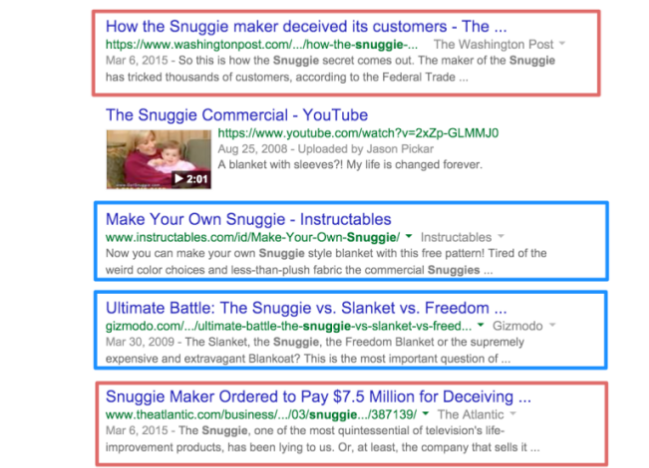
But right behind that is no results on page one.
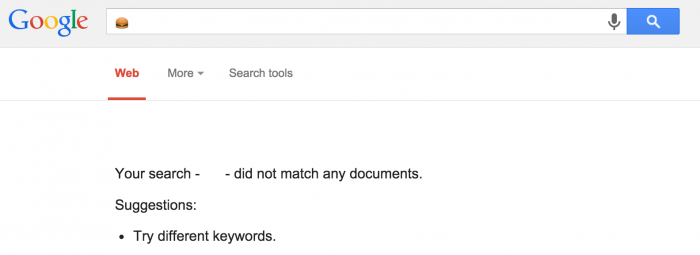
According to the internet, you do not exist.
I find this too often with business people that are wanting to promote their business.
In the olden days, before the internet, you needed a physical location and a phone number to be legit.
Now you need to be found online. That’s more important than a street address and phone number.

And if you are on the first page with a link to what you want people to find when they Google you, excellent!
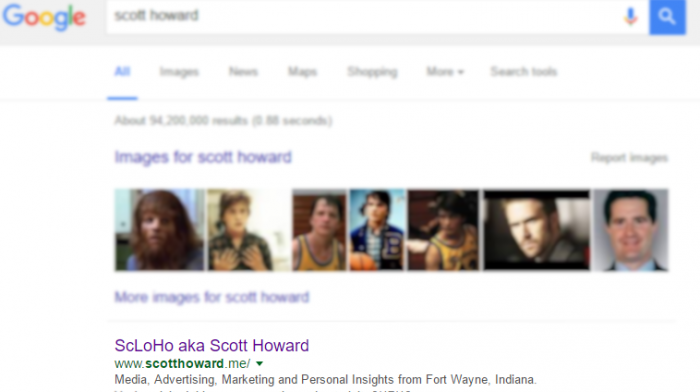
You need to invest in more than a Facebook page, you really need to pony up the cash and buy your own domain and create at least a landing page that you control and is about you.
Let’s review:
- People will Google you to learn about you
- Negative results about you are bad
- Not being found at all is also bad.
- You have the power to be found by creating your own spot online
Need help? Talk to me.
by Scott Howard | Apr 15, 2016 | Marketing and Advertising Insights, ScLoHo's Collective Wisdom, ScLoHo's Media, The Not-So-Secret Writings of ScLoHo, WOWO Fort Wayne Radio Advertising with Scott Howard
Ever wonder what kind of people listen to News Talk Radio during political seasons? I’m talking about my station, WOWO Radio in Fort Wayne, Indiana and News Talk formatted radio stations all over the country.
Nielsen released a study this month that, “looked at listening and voting behavior of more than 70,000 panelists, aged 18 and older, in 45 major U.S. markets. Among all listeners, preference News/Talk format ranks first for six of the 10 voter segments, including Super Democrats, Conservative Democrats, On-the-Fence Liberals, Green Traditional, Mild Republicans and Ultra Conservatives. ”
Here’s the details of the favorite radio formats of the voter segments, with those whose 1st choice is News Talk circled:
 While the political talk on WOWO Radio leans conservative, what I found surprising when I first saw this info, was how anyone who has an interest in political stuff, both liberal and conservative, listen.
While the political talk on WOWO Radio leans conservative, what I found surprising when I first saw this info, was how anyone who has an interest in political stuff, both liberal and conservative, listen.
Due to the nature of News Talk Radio, WOWO, being a station that has active listeners (versus passive listeners who are listening for background music) and the only station that consistently has over 100,000 grown ups listening every week, this is why so many advertisers have success with WOWO.
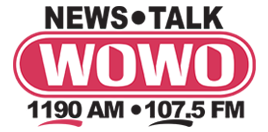
By the way, in Fort Wayne, there is an election 3 out of every 4 years.
Want to invite our listeners to spend their money with your business? Contact me and we’ll talk about how this works. Scott@WOWO.com 260-255-4357
by Scott Howard | Mar 23, 2016 | Marketing and Advertising Insights, ScLoHo's Media, ScLoHo's Web World, The Not-So-Secret Writings of ScLoHo
Continuing the conversation about Mass Media from the other day…
50 years ago it was easy to decide where to advertise. There were fewer options and each option had a significant audience. Today there is no one media that reaches everyone and each media outlet reaches less than any one did 50 years ago. 
Sure, “radio” reaches 93% of all Americans age 12 and older each week, but there are hundreds of radio stations. That’s a useless statistic for advertisers.
(By the way, my examples today are going to be using the two medias I work in and can help you with… radio and digital.)
The question is Should You Market to the Masses?
90% of the businesses should not.
9% could.
1% does.
The most recognized businesses in the United States include:
McDonald’s
Walmart
Amazon
Apple
Google
Microsoft
and a few more.
Each of those businesses can serve massive amounts of people each week and they fit that 10% category.
Today I’ll focus on McDonald’s. I have studied them for years and worked with them locally for the past 10 years. McDonald’s does not market to the masses, not in the way they did 50 years ago.
Each year McDonald’s decides where to spend their advertising dollars based to which segment of the masses they want to reach. Then they buy accordingly. One year their focus was 35 to 65 year olds. This year they switched it to 18 to 50 year olds. They used traditional mass media (radio) to invite people each year, but they targeted the people listening to stations that fit the age demographic profiles of those stations.
Google is in the 1% that wants everyone and markets to everyone. But they do it with a boatload of products and services including the Google Search Engine, Gmail, and the Android smartphone platform that powers more mobile devices than any other.
But let’s bring things down to earth and the local level. The 90% of businesses that should not market to the masses.
There is a health food shop that has been around for over 40 years that uses targeted marketing. They have a limited capacity and also a niche customer base. While there is some overlap between them and the McDonald’s clientele, it’s not the same target.
That brings me to what the 90% of most businesses should do instead of old fashioned mass media marketing.
Targeted media marketing. This requires some thought and research along with planning and strategic planning. More on targeted media marketing next time.
by Scott Howard | Mar 21, 2016 | Marketing and Advertising Insights, ScLoHo's Media, ScLoHo's Web World, The Not-So-Secret Writings of ScLoHo, WOWO Fort Wayne Radio Advertising with Scott Howard
It’s a fascinating discussion when I ask people about their media habits in 2016. A lot has changed over the years with more options than ever and sometimes people ask me a variation of this question,
Is Mass Media Dead or Thriving?
It is actually thriving but in ways different than before.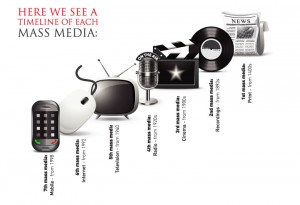
Mass Media by definition is considered a form of media that is consumed by a large number of people. While that definition hasn’t changed in the past 100 years, the way that media is delivered and consumed has changed over the past 25 years.
For my purposes today, I’m going to address this from a marketing standpoint.
While we have seen the decline of newspapers and magazines, those that have survived have done so by reinventing themselves to appeal to a niche audience. It’s doubtful that we’ll ever have the dominance of a major print publication, even on the local level except where there are no other media options available. But then there’s the internet…
Television was dominated by ABC, CBS, NBC and then PBS and Fox came along to provide a few more viewing options. Unless you recorded a show on your own, you had to watch it live. This was an excellent way for advertisers to reach a bunch of people simultaneously with their commercials as we sat “glued to the tube”. Then with the expansion of networks and the ability to time shift and watch what ever we wanted, when ever we wanted, the simultaneous viewing of commercials began declining. But then there’s the internet…
Radio stations that play music have always had competition. As consumers we could buy the music and listen when ever we wanted to what ever we wanted. Music radio stations have always had competition for music listenership that went beyond other radio stations. Then with the expansion of choices including the internet…
Talk Radio stations have had a mix bag of competition. When I first started listening to WJR and WWJ in Detroit 30 years ago, I tuned it for information. Some talk stations don’t offer the information that listeners want and they have lost listeners because their are plenty of options including the internet…
As a side note, I looked at the listenership of the Fort Wayne radio stations and 4 of the top 5 stations have incredibly large audiences of over 100,000 weekly listeners. That’s 20% to 30% of the population, each of those stations reaches individually. WOWO, my station, and 3 of our sister stations that play music are in that top 5, out of over 25 stations in the Fort Wayne metro area.
The concept of Mass Media has changed. When there were fewer options, each option had more people reading/listening/viewing. Now we have the ability to personalize our media habits as consumers and as marketers.
I don’t need a newspaper subscription to read the local news. I can get the information online. I don’t need to watch CBS on Tuesday night at 8pm to see the latest episode of NCIS. I can watch it later On Demand with Comcast on my TV, laptop or smartphone. I don’t need many of the old medias on a daily basis the way my parents did.
Instead we get to choose. I can listen to the radio as I am driving to work to get the news, weather, sports and other information. A lot of people still do this. Even teens do this. Maybe not as many as their grandparents generation, but they still do.
For businesses that want to reach the masses, it’s do-able. We have plenty of options and we’ll look at those options next time.
by Scott Howard | Feb 16, 2016 | Marketing and Advertising Insights, ScLoHo's Collective Wisdom, ScLoHo's Media, ScLoHo's Web World, WOWO Fort Wayne Radio Advertising with Scott Howard
My radio station WOWO Radio in Fort Wayne, Indiana, just released a new smartphone app as one of our improvements for 2016. You can find it here for Android and for those of you Apple fans, go here.
We just revised our website this year too with a cleaner, less cluttered look than our previous site. The WOWO App and the website are continuously updated with the stories and interviews minutes after they first appear on the air at WOWO radio. You can also listen online from the website or the WOWO App.
Why the changes?
Multiple reasons but a big one is the continued growth of smartphones, both iPhones and Androids. Nearly 80% of us have one now.
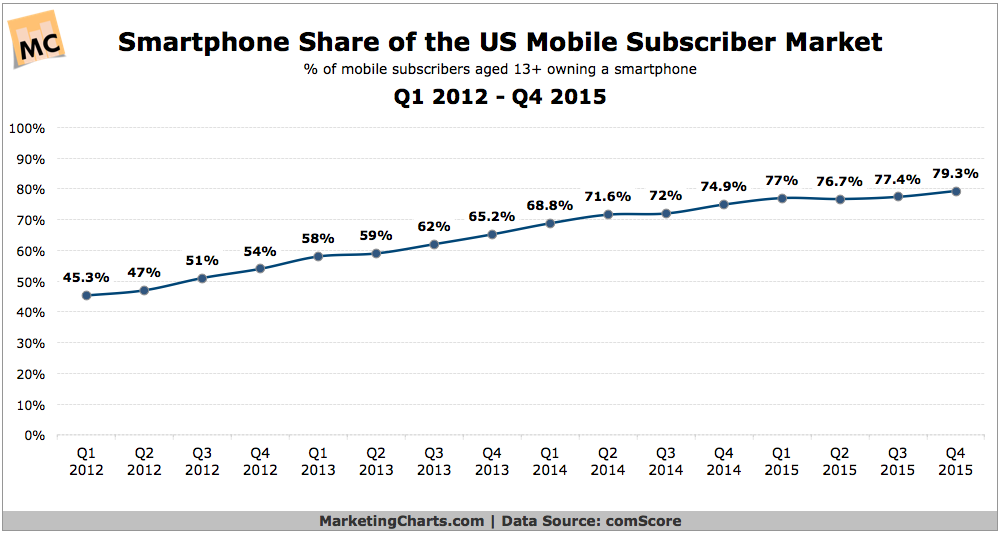
This means if your website is not mobile friendly, you are annoying, no, let me say it stronger, you are pissing off 4 out of 5 people because you are behind the times.
Need help with an upgrade? Contact me. Like Yesterday.
by Scott Howard | Jan 26, 2016 | Marketing and Advertising Insights, ScLoHo's Collective Wisdom, ScLoHo's Media
Recently with all the ups and downs in the market, mostly downs, I received a note from my broker not to worry, all will be okay.
That’s great, but I’d rather have someone tell me how to earn money instead of lose it or gamble with it.
Another email I received this month, told me how, IF I OWNED A BUSINESS. And the answer is one I have seen play out repeatedly over the years… Advertising on the radio.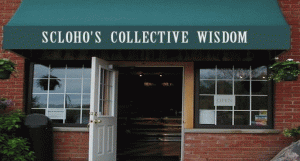
Before I share the details, I invite you to talk with me about learning how we can might be able to create a real return on your investment. I’ll be honest with you and tell you what you need to know, not just sell you stuff. I may decide NOT to sell you anything, that’s a story for another day.
Here’s the article that mentions a 17:1 ROI using radio as an advertising medium (from Marketing Charts):
Radio ROI Compelling Advertisers
by Jack Loechner
According to a recent Nielsen “sales effect study,” examining radio’s return on ad spend in four retail categories, every dollar spent in radio advertising could generate up to $17 of revenue from listeners exposed to ads from department stores, home improvement stores, mass merchandisers and quick-service restaurants. Hispanic consumers led all categories measured in total spend, and drove increased sales ranging from 9% to 49%.
The study found that, while new digital formats are capturing headlines, traditional formats, specifically radio, could give advertisers the returns they want, says the report.
Combined data from Nielsen’s Portable People Meter (PPM) panel with Nielsen Buyer Insights credit and debit card data, radio exposure positively affected bottom-line sales and drove new, valuable shoppers for each category studied…
Carol Edwards, senior vice president, media analytics, Nielsen, concludes that “… reaching 93% of all U.S. adults every week and playing a leading role in consumers’ purchasing decisions, radio has the ability to positively impact campaign results… ”
| Weekly Reach of Devices (% Of U.S. Population) |
| |
Age Group
|
| Device |
All Adults
|
18-34
|
35-49
|
50+
|
| TV |
87%
|
76%
|
90%
|
93%
|
| Radio |
93
|
93
|
95
|
91
|
| PC |
54
|
49
|
63
|
54
|
| Smartphone |
70
|
80
|
81
|
56
|
| Tablet |
33
|
42
|
49
|
22
|
| Source: Nielsen, October 2015 |
For more info, contact me Scott@WOWO.com or 260-255-4357












